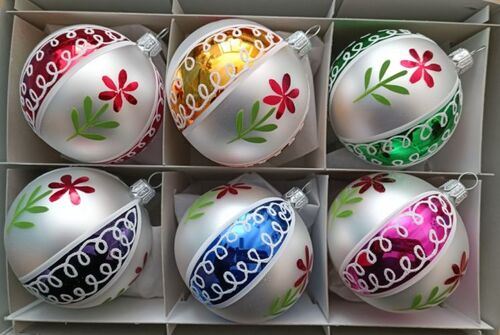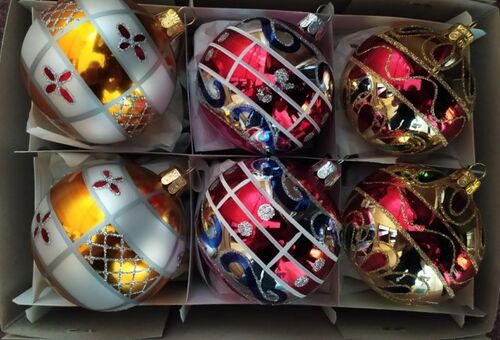
Glass Christmas decorations - Czech tradition
Glassmaking has a very long tradition in the Czech Republic. Unfortunately, in recent years, some factories are struggling to survive, not only due to competition from cheap pressed products from China, but also due to extraordinary price increases of electrical and gass energy.
Traditional products include Christmas decorations, which are produced by several factories.
.png)
The beginning of production in the Czech Republic (at that time Austrian-Hungarian Empire)dates back to roughly the middle of the 19th century, when the tradition of decorating trees entered Czech households from Germany. In 1858, when a drought caused a shortage of fruit in the northern Vosges in Alsace and it looked like the traditional symbols of Christmas would remain without decorations that year (mainly red apples were hung on the trees), a certain glassmaker from Goetzenbruck had an idea and tried to blow some balls from glasses to make up for the lack of fruit. The fragile, beautiful novelty was a success and thus a tradition was born that lasted for centuries and was transferred to practically most cultures around the world.
.png) The glass decorations shown here are made in a co-operative in town Opava
The glass decorations shown here are made in a co-operative in town Opava
where only women do this handwork.
The production has three main phases.
In the first stage, a semi-finished product, the so-called flask body with a neck, is created from glass tubes of different diameters, heated over the direct flame of a gas stove. This semi-finished product is again heated over the burner and blown either into forms of various shapes (figures, hearts) or freely into space (spheres 4-12 cm, spheres 15-20 cm, olives, rockets, bells and spikes).
.png)
.png)
In the second stage, the blown flasks must be silvered from the inside using a solution of silver nitrate and a reducing solution. In order for the chemical reaction, i.e. the reduction of silver and silver plating, to occur, Christmas decorations must be soaked in 50 degree hot water. The silver is then deposited on the inner walls of the ornaments.
.png)
.png)
After drying, the third stage of the production process begins. The flasks are washed, dried and dyed to obtain the desired color base in matte or gloss. Then experienced painters decorate them with colors, sprinkles, beads or glitter.
.png)

The choice of decorations is unbelievably large. Here you see only some examples.
.png) Christmas presents for you !
Christmas presents for you !
"Without glass ornaments, Christmas doesn't have the right sparkle!"

Enjoy the Christmas time !
Margaret .png)
